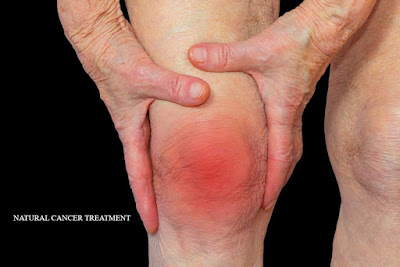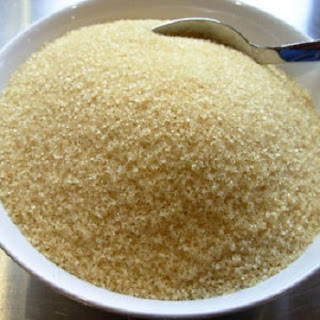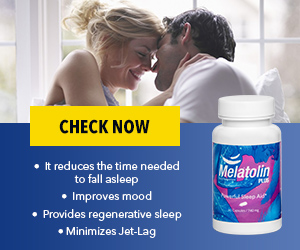 | |||
| ARTHRITIS |
Arthritis Or Knee Stiffness: A Gelatin Can Be Cure
Arthritis is the tenderness and swelling of one or more of your joints. Joint pain and stiffness are the main symptoms of arthritis, which usually intensify with age. Osteoarthritis and remitted arthritis are the most common types of arthritis.
Osteoarthritis causes a breakdown of cartilage – the heart, slippery tissue that covers the ends of bones where the form of a joint. Rheumatoid arthritis is a disease that attacks the joints by the immune system, starting with the lining of the joints.
Crystal of Uric Acid, which forms when your blood contains too much unique acid, can cause gout. Other types of arthritis that may be caused by infections are underlying diseases such as psoriasis or lupus.treatments that vary from one type of arthritis to another. Arthritis therapies have the primary objectives of reducing symptoms and increasing quality of life.
Symptoms:
The joints are involved in the most common signs and symptoms of arthritis.your sign and symptoms may include, depending on the type of arthritis you have like fatigue, rigidity, twilight, roughness, diminished range of motion.
Cause:
The two main types of arthritis – in osteoarthritis and rheumatoid arthritis – damaged joints in different ways.
The two main types of arthritis – in osteoarthritis and rheumatoid arthritis – damaged joints in different ways.
Osteoarthritis:
Osteoarthritis the most common type of arthritis causes wear and tear damage to the cartilage of the joint the rough smooth surface at the end of the bones where it forms a joint. Cartilage cushions the ends of the bones and allows almost friction less joint movement but sufficient Damage can lead to bone grinding directly on the bone causing pain and restricted movement. This wear and anterior Can happen over several years or a joint fracture or infection can Hasten it. Osteoarthritis has an effect on the whole joint. It causes changes in the bones and the connective tissues to deteriorate which attach muscle to bone and hold the joint together. It also causes joint lining to become inflamed.
Rheumatoid Arthritis:
During rheumatoid arthritis, the body's immune system destroys the joint capsule lining attic membrane that encloses all areas of the joint. This lining Sino veal membrane swells and is inflamed. The process of the disease may eventually destroy cartilage and bone inside the joint.
What is Gelatin:
Gelatin is a product made by cooking collagen. It is made almost entirely from protein, and its unique profile of amino acids gives its many health benefits. Collagen is the protein found most abundantly in humans and animals. It is present almost anywhere in the body but the skin bones tendons And ligaments are most abundant. It provides energy and structures for tissue. Collagen, for example, increases skin flexibility, and Tendons' strength. However, eating collagen is difficult because it is usually found in unpalatable animal parts. The gelatin extracted during this process it's flavorless and colorless. It dissolves in warm water, and as it cools, it takes on a jelly-like feel. This has made it useful in food production as a gelling agent, in products such as gel – O and gummy sweets. It can also be consumed as a bone broth Or supplement. Sometimes gelatin is further processed to produce a substance is called hydroxylate collagen. Which contains the same amino acids as gelatin and has the same health benefits.
It dissolves in cool water and is not forming a jelly, however, this means that some people may find it more appealing as a supplement. Both gelatin and hydrolysate Collagen are available in powder or granule form a supplement. Gelatin can also be purchased in sheet form. Nevertheless, because it is made from animal parts it is not suitable for vegans.
Rheumatoid Arthritis:
During rheumatoid arthritis, the body's immune system destroys the joint capsule lining attic membrane that encloses all areas of the joint. This lining Sino veal membrane swells and is inflamed. The process of the disease may eventually destroy cartilage and bone inside the joint.
 |
| Arthritis staging |
Gelatin is a product made by cooking collagen. It is made almost entirely from protein, and its unique profile of amino acids gives its many health benefits. Collagen is the protein found most abundantly in humans and animals. It is present almost anywhere in the body but the skin bones tendons And ligaments are most abundant. It provides energy and structures for tissue. Collagen, for example, increases skin flexibility, and Tendons' strength. However, eating collagen is difficult because it is usually found in unpalatable animal parts. The gelatin extracted during this process it's flavorless and colorless. It dissolves in warm water, and as it cools, it takes on a jelly-like feel. This has made it useful in food production as a gelling agent, in products such as gel – O and gummy sweets. It can also be consumed as a bone broth Or supplement. Sometimes gelatin is further processed to produce a substance is called hydroxylate collagen. Which contains the same amino acids as gelatin and has the same health benefits.
It dissolves in cool water and is not forming a jelly, however, this means that some people may find it more appealing as a supplement. Both gelatin and hydrolysate Collagen are available in powder or granule form a supplement. Gelatin can also be purchased in sheet form. Nevertheless, because it is made from animal parts it is not suitable for vegans.
Gelatin Ingredients:
Gelatin is a protein of 98 to 99%. It is an incomplete protein however since it does not contain all the essential amino acids. In particular, it does not contain the essential tryptophan amino acid and this is not a concern since you are unlikely to consume gelatine as your sole protein source. Getting tryptophan from other protein-
rich foods is too simple.
Gelatin is a protein of 98 to 99%. It is an incomplete protein however since it does not contain all the essential amino acids. In particular, it does not contain the essential tryptophan amino acid and this is not a concern since you are unlikely to consume gelatine as your sole protein source. Getting tryptophan from other protein-
rich foods is too simple.
Here is the most abundant amino acid in gelatin from mammals as follows – glycine 27%, Proline 16% Valene 14% hydroxyproline 14% and glutamic acid 11%.
The exact composition of the amino acids where is according to the type of animal tissue used in the preparation process. Interestingly gelatin is the amino acid glycine Richest food source and is particularly important to your health. Studies have shown that although your body can do that. Usually, you want to make enough to cover your needs. This means it’s necessary to eat enough in your diet. The nutrients compositions of the remaining 1 to 2% vary, But consist of water and small quantities of vitamins and minerals including sodium-calcium phosphorus and folate.
Yet generally speaking generating is not a rich source of vitamins and minerals, rather its health benefits are a result of its unique amino acid profile.
Collagen:
In the animal kingdom, college and is the most abundant protein. There are 16 colleges forms but almost all of your body is collagen is type 1,2and 3. You will find types one and two and three in your skin, tendons, and bone. Forms second collagen is contained in the cartilage and hence it’s linked to arthritis. Collagen is composed of amino acids the protein building blocks. The idea behind taking the supplements is for your body to use the amino acid to protect and rebuild your cartilage together. There are three types of collagen supplements— Gelatin hydrolyzed and undenatured.
Gelatin and hydrolyzed collagen one break down to smaller pieces, from large proteins. When collagen is boil for a long time it is broken down into gelatin as in bone broth. Collagen I also be called Collagen hydrolysate, Hydrolysed gelatin, collagen peptides, or hydrolyzed collagen in its basic amino acids.
Undenatured collagen does not divide into tiny proteins or amino acids. And denatured type second collagen is not intended as a college in rebuilder for the body to use. In a method called oral tolerance, a very small dose of undenatured type 2nd collagen is used to prepare The body's immune system to avoid destroying their own collagen, explains Kimberly Sanders, ND, assistant professor of clinical sciences at the College of the Naturopathy medicine the people's University of Bridgeport.
Gelatin Treatment in Stiff Knees (Arthritis) and Study:
Many who have survived school lunches for years may become weak in the knees and that thought of having to eat any more gelatin. Yet a recent study published last week at a meeting of the American Academy of family physicist in Dallas indicates adding a special dietary gelatin supplement might offer some relief for people with moderate knee osteoarthritis.
Osteoarthritis describes the most common type of arthritis or joint inflammation and swelling. It happens as a result of aging and thousand natural shocks to which weight-bearing joints are frequently used joint—-– Including knees, fingers, and wrist are exposed. Much as the Knees of a Favourite pair of jeans we are out over time, wear and tear on cartilage Will eventually cause osteoarthritis to the tissues that cover and help lubricate ends of bones where they meet of joints.
Symptoms of the disease include discomfort, stiffness, and limited joint mobility.
In the study 175 knee arthritis patients were randomly allocated to either receive a daily gelatin supplement or placebo. Those who ate a supplement that contains 10 g of gelatin plus calcium and vitamin C had significant improvements in pain stiffness and mobility measures across the board. According to C in F McCarthy, MS from the Institute of clinical and lifestyle research in Shrewsbury, mass, This indicates that gelatin supplementation has the ability to enhance Ne function during activities that cause highlights of joint stress.
But before you go to the grocery store to store some gelatin, you should know that gelatin will get the Credit for a good old vitamin C function. If gelatin were safe there would be less osteoarthritis in this country and not more because it is commonly found in food says Timothy Macallindon, MD, MPH, associate professor of medicine at the Boston University school of medicine and a staff member at the Boston University Medical Centers Arthritis center.
MacAllindon, Who treats patients with osteoarthritis, previously conducted a study examining the role of that in pupil with knee osteoarthritis, “and found an apparent a strong protective effect of high vitamin C intake on the progression of knee osteoarthritis. Vitamin C could, therefore, play a role – it is an antioxidant and has other effects that could be considered beneficial” he says.
Men and women with symptoms of moderate knee Osteoarthritis were first evaluated for knee pain, stiffness, mobility, flexibility, and joint strength in the study published in Dallas. They were then randomly assigned with calcium and vitamin C to receive either a placebo or gelatin. At eight and 14 weeks into the study, the evolution was repeated. The researchers found that all discomfort, stiffness, and mobility measurement were substantially improved through the session for all subjects within both classes. However, for certain strength and work performance tests, people who are eating gelatin showed significant improvement over others, “particularly those Tests that challenged the joint structure at the most “ the researchers noted.
McAlindon tells Webmd That only taking 60 MG of vitamin C per day – besides the amount already in the diet – greatly decreases the risk of development of osteoarthritis. He noticed that people who are the most vitamin C Daily in his diet and osteoarthritis a study had multiple reductions in the risk of progression of osteoarthritis that the difference between the lowest third and middle third was only 60 MG. That was not a big increase so it was like taking some extra orange a Day, He says.
There has been no report as to whether the same treatment effect could be seen with orange-flavored Jell-O as from this writing. Remain tuned to that channel.
Dosage of Gelatin in Osteoarthritis:
Gelatin is almost safe and most People consume in foods. The larger amount used in medicines is possibly safe there is some evidence that gelatin in doses up to 10 grams daily can be safely used for up to 6 months.
In the first month take 5 gm or (half tablespoon) and from second month 10 gm or a full tablespoon of food-grade gelatin powder mixed with a less than half glass of water and keep it for overnight with covered the class, in the morning it would seem like gelatin paste, mix this paste with Curd or yogurt or Pineapple juice, which ones are easily available and take it empty stomach, Along with taking good companies Calcium which should be in the form of calcium citrate malate for better absorption 250 or 500 mg twice daily with Vitamin C 500 mg twice daily, and one pantoprazole (PPI) once daily and take one 60000 IU Vitamin D twice in a week in 3 days of a gap, for 3 to 6 month.
Side Effects: As gelatin is natural substances, it comes from animal and not many side effects reported, but gelatin can cause an unpleasant taste, feeling of heaviness in the stomach, bloating, heartburn, and blenching, Gelatin can also cause allergic reactions. In some People, allergic reactions have been severe enough to damage the heart and cause death, so In case of any allergic reaction shows please stop this treatment immediately.
Contraindication: ( Who should not take) A condition like pregnancy and lactation or any cardiac disease avoid Gelatin treatment.
AdBlock Detected
Please disable your AdBlock to access this website.










